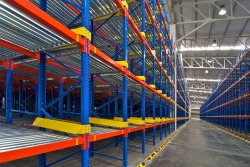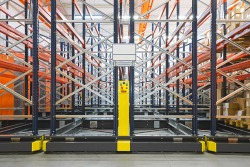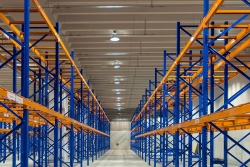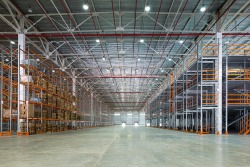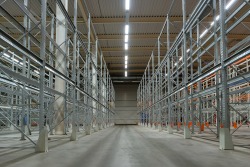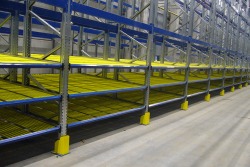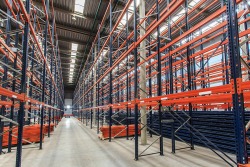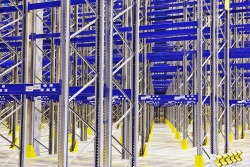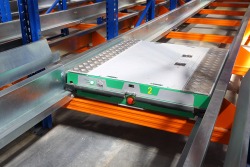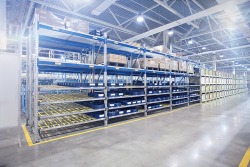Our company performs professional and complex assembly of storage racks of various types.
- Pallet Racks Pallet Racks are used in all warehouses where goods are stored on pallets. Depending on the type and nature of the goods stored on them, there are different types of pallet racks with different configurations.
- Drive-In Racks, are often used in cold stores and refrigerated warehouses where the turnover of goods is not so dynamic. This system minimises the number of passageways and thus increases the storage area.
- Mobile Shelving Racks are most commonly used in archives and their design allows for maximum utilisation of storage space. These racks are mounted on rails equipped with motors or other drive elements to allow staff access to the aisles. The mobile bases of the mobile shelving units are fitted by the manufacturer with drive motors and the necessary electronic equipment to make handling easier.
- Gravity Flow Racks This type of racking is designed for goods with a short shelf life and is most commonly used in the food and pharmaceutical industries. This system is based on gravity movement of the goods to the opposite end of the rack. This means that the goods are loaded on one side of the rack and unloaded on the opposite side. This solution allows optimal control of the time of delivery of the goods.
- Pallet Shuttle System is a fully automated system most often used for frequent loading and unloading of a specific group of goods. It allows efficient use of warehouse space, sometimes as much as 50%. The dominant feature is high efficiency through reduced labour costs, as the system is controlled by a computer. These racks are very profitable not only because of the space-saving design, but also because of the reduction in loading and unloading times, which reduces the risk of collisions and accidents.
- Push-Back Racking is a racking system that allows storage of up to four pallets in depth. It is used in industries where the expiry date is not very important. When a pallet is loaded into a rack, the trolley pushes the pallet already in the rack. The last pallet loaded is unloaded first. An undeniable feature of this system is that it makes optimal use of storage space.
- Clad Rack Warehouses are also called silo warehouses, where the pallet racks form the supporting structure of the entire warehouse. All warehouses of this type are fully automated. The buildings can be up to 40 metres high and are completely resistant to weather conditions such as wind or prolonged snow. An investor who opts for this type of warehouse benefits from the optimisation of storage spaces for the goods, the minimisation of possible damage to goods, and the time saved when loading and unloading the warehouse.
- Shelf Racks are racks designed for storing goods without packaging. The most popular and cheapest way to equip a warehouse or shop: shelves are used in both small and large shops. They are very popular in warehouses and workshops. They are very durable and aesthetically finished. They are designed for manual operation. Shelf racks are characterised by a modular design, i.e. they can be configured as desired. They are easy to assemble and disassemble, have different heights of exposure and storage.
- Storage Platforms - mezzanines are self-supporting one- or two-storey structures. The manufacturer offers a wide range of dimensions that allow very good adaptation to the building's volume and, if necessary, quick dismantling using the same materials. The investor has the comfort that the mezzanines can be combined with other storage systems.
- Cantilever Racks This storage system is designed for long items such as pipes, boards, sheets, beams etc. Depending on your requirements, there are three versions of this system, which differ in their load capacity. The system is not automated and must be operated manually or with a forklift truck. Cantilever racking allows loading from both sides, maximising the use of the warehouse or yard, as this type of racking can also be used outdoors.
- Roller Conveyors - this system is used to transport goods within the warehouse and connects different work stations. It is either self-propelled by a slight inclination of the skid, with the goods moving under the influence of gravity, or fully automated. The automated form of the roller conveyor reduces human effort to a minimum, resulting in higher productivity and efficiency. It prevents uncontrolled accidents in the production line, which improves safety and working comfort.
